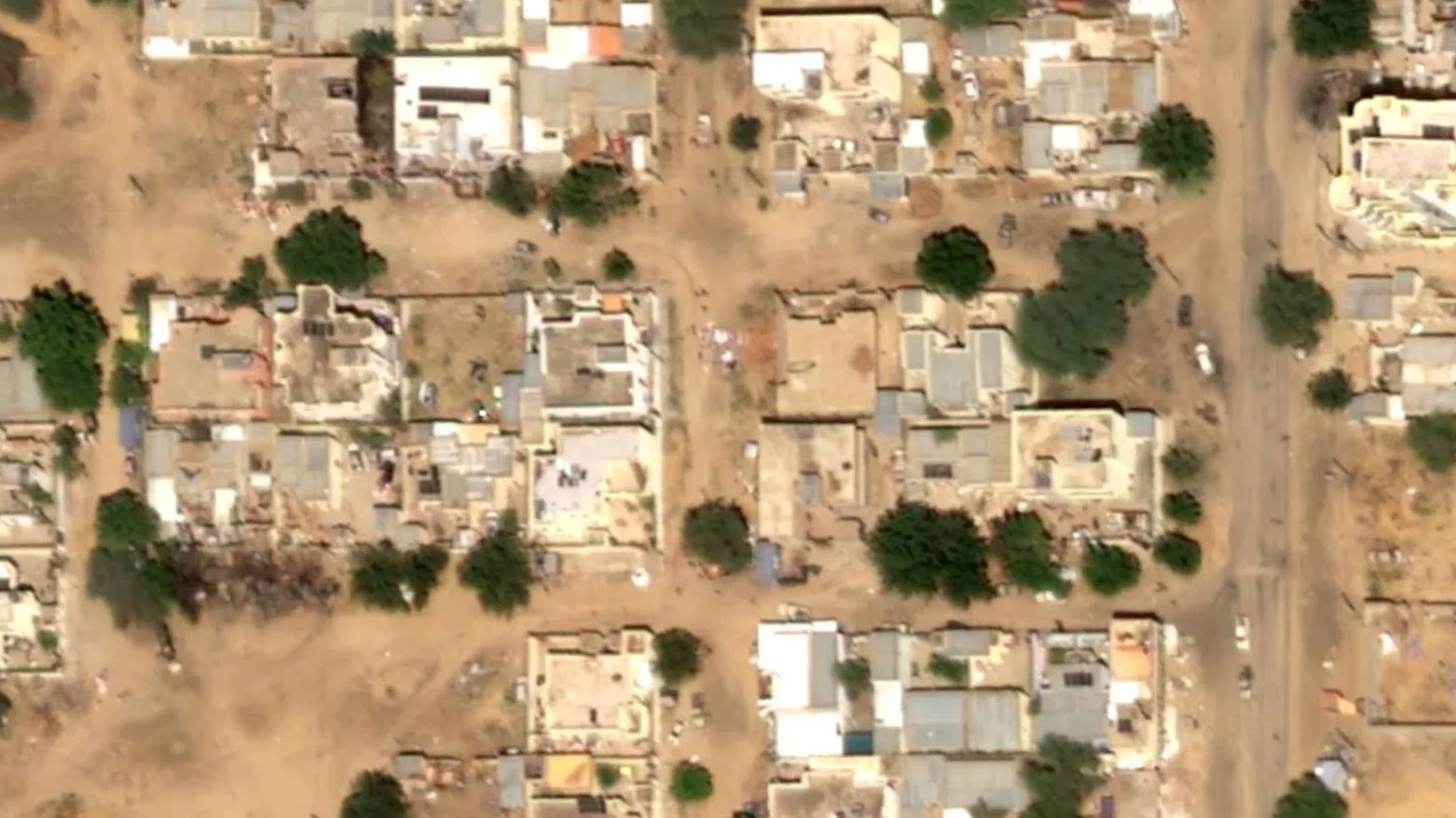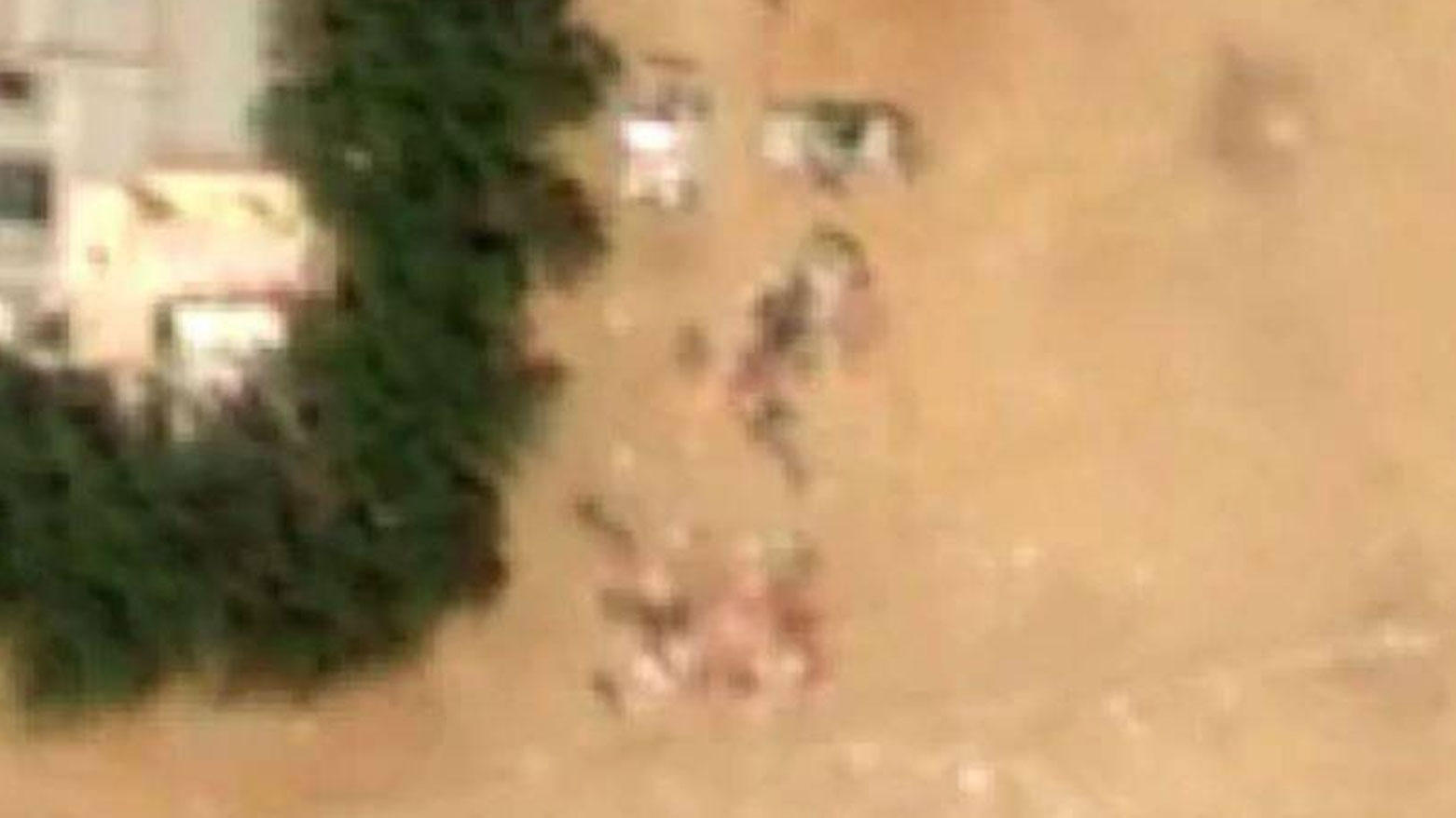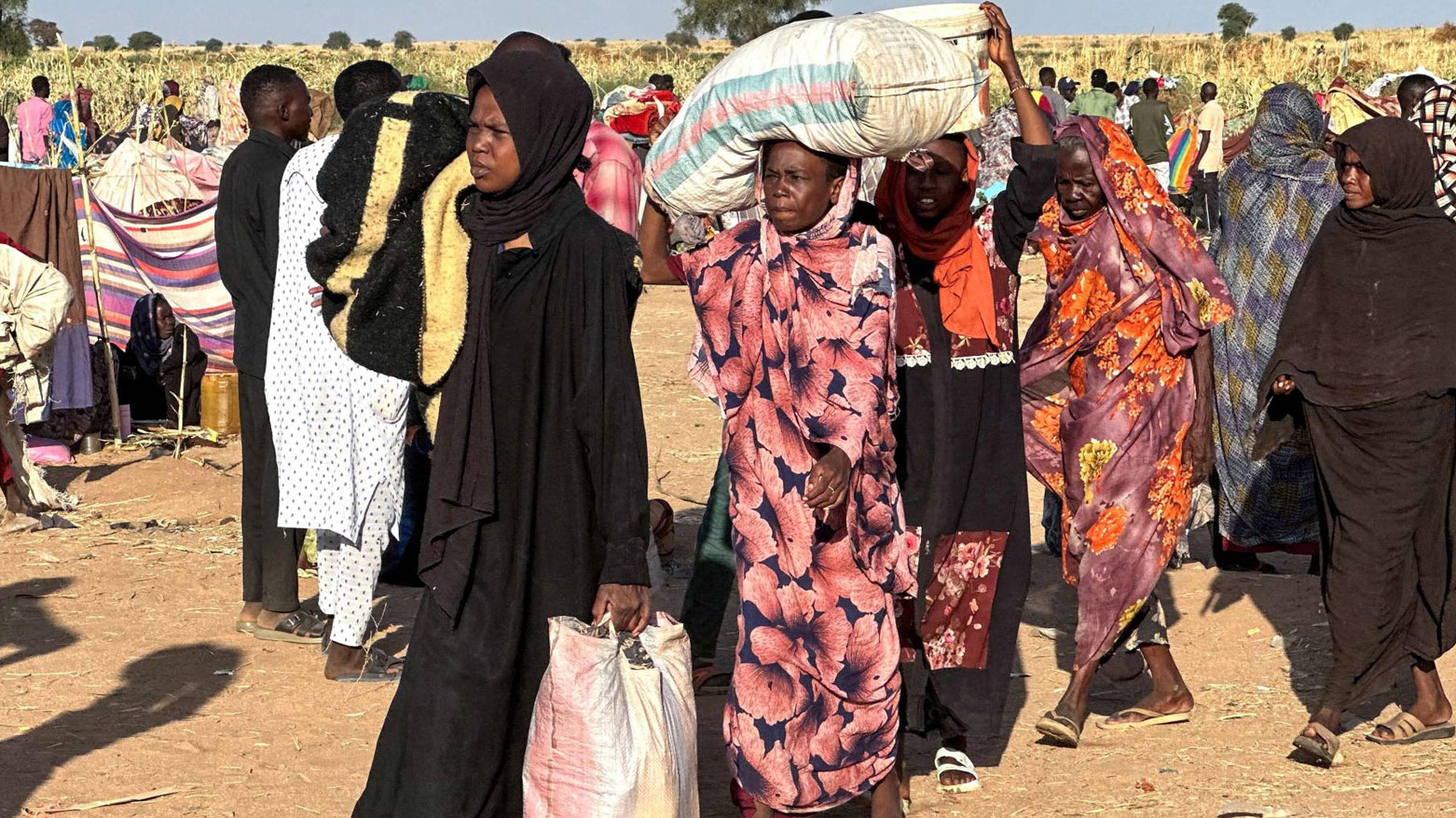"Pools of Blood Visible from Space": Satellite Images Reveal Atrocities in Sudan's El-Fasher
Satellite imagery analyzed by Yale University shows pools of blood and human bodies in El-Fasher following RSF's capture of the city, corroborating reports of mass killings. Researchers describe evidence consistent with ethnic cleansing and war crimes against civilians.

ERBIL (Kurdistan24) – Newly released satellite images have revealed evidence of large-scale massacres in El-Fasher, the capital of North Darfur, following its capture by Sudan’s Rapid Support Forces (RSF) after an 18-month siege. The images, analyzed by Yale University’s Humanitarian Research Lab and reported by The Telegraph, show pools of blood and piles of bodies visible from space — a stark testament to what international observers and local witnesses describe as one of the deadliest episodes of violence in Sudan’s ongoing conflict.
High-resolution satellite images captured by Airbus DS reveal human-sized bodies lying on the ground near what appear to be RSF vehicles in El-Fasher’s Al-Daraja district. The surrounding sand is visibly stained with red, which analysts believe indicates widespread bloodshed. According to The Telegraph, the pools of blood are so large and dense that they can be seen clearly from space.
The imagery corroborates reports that over 2,000 civilians — mostly women, children, and the elderly — were executed by RSF fighters after they overran the city. The forces, accused by regional governments and international organizations of committing atrocities “close to genocide,” allegedly carried out house-to-house purges and summary executions of residents attempting to flee.

The Yale Humanitarian Research Lab, which has been monitoring the siege through open-source and satellite data, said the images show clusters of human-sized objects and discolored earth “consistent with bodies and blood-soaked soil.” Researchers also identified massed bodies near RSF vehicles and along sand berms erected as fortifications around the city.
Nathaniel Raymond, Director of the Yale Humanitarian Research Lab, told Agence France-Presse that “the level of violence and number of incidents in Darfur exceed anything I have seen so far.” He warned that RSF’s control of aerial reconnaissance equipment makes “hiding impossible — they can see everything from the sky.”
The lab’s report concluded that El-Fasher appears to be undergoing “a deliberate and systematic campaign of ethnic cleansing against Sudanese ethnic groups,” supported by both satellite and witness evidence. The analysis also documented signs of forced displacement and mass flight southward, consistent with videos posted online showing civilians being executed as they tried to escape.
Images analyzed by Yale’s team also revealed newly disturbed ground and “red discolorations” consistent with human blood, alongside burnt structures and abandoned vehicles.
Multiple international and regional organizations have accused the RSF of committing war crimes and crimes against humanity during its assault on El-Fasher. Local defense groups that had fought alongside the Sudanese army claimed that RSF forces carried out “horrific atrocities against innocent civilians,” including the execution of more than 2,000 unarmed people on October 26 and 27.
According to reports from the ground, entire neighborhoods were subjected to house raids and mass killings. One video, verified by journalists, reportedly shows a child soldier executing an unarmed man at point-blank range. Another shows RSF fighters pretending to release captives before shooting them seconds later.
The Humanitarian Research Lab stated that “the world must act immediately to exert maximum pressure on the RSF and its backers to halt the killings,” emphasizing that the events constitute “war crimes and crimes against humanity.”
Before its fall, El-Fasher had served as the last major army stronghold in the vast Darfur region. More than 250,000 civilians had sought refuge there amid starvation and constant bombardment during the prolonged siege. When the RSF finally captured the city over the weekend, satellite data and videos began to reveal what researchers now call “a massacre visible from orbit.”

Bodies were seen piled near RSF encampments and scattered along main roads and the city’s periphery. Witness accounts confirmed that civilians attempting to flee were shot at point-blank range. Images also showed dense population movements toward southern Darfur, indicating a mass exodus from the devastated city.
The discovery of mass graves and the growing body of satellite and eyewitness evidence have triggered widespread condemnation. Regional governments, the United Nations, and human rights groups have urged urgent international action to prevent further atrocities.
The Yale report underscored that the evidence is “consistent with deliberate mass killings and systematic ethnic targeting,” warning that without international intervention, “the scale of civilian loss could increase dramatically.”
As the last remnants of Sudan’s army and local defense groups withdraw from Darfur, El-Fasher stands as a grim symbol of the war’s human toll — a city transformed into an open graveyard, its red-stained sands visible from space.
The satellite revelations from El-Fasher provide one of the most damning visual confirmations yet of atrocities committed during Sudan’s ongoing civil war. With over 2,000 civilians reportedly executed, entire neighborhoods razed, and evidence of ethnic cleansing mounting, the tragedy in North Darfur marks a dark chapter in the country’s conflict.
International observers warn that unless the global community acts decisively, the mass killings seen from the sky will be only a prelude to deeper horrors unfolding on the ground — a genocide broadcast, this time, in the clearest satellite imagery ever recorded.